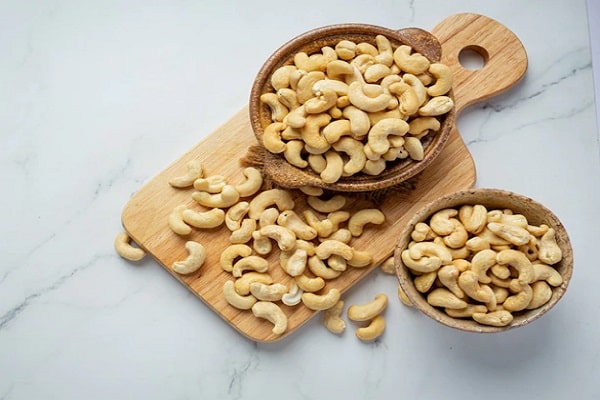The global cashew market stands at a pivotal juncture as Kerala’s once-vibrant processing hub teeters on the edge of crisis. Traditionally rooted in Kollam, India’s cashew industry—employing nearly 750,000 workers—has seen its dominance eroded by a cocktail of rising global demand, mounting input costs, and persistent bureaucratic challenges. Once the world’s unrivaled leader in both production and export of cashew kernels, India now depends heavily on imports, with domestic supplies meeting less than half the industry’s needs.
Imports, primarily from Africa, Southeast Asia, and Latin America, surged to nearly USD 2.5 billion in 2023 alone. Meanwhile, India’s cashew export earnings, formerly topping USD 4.2 billion, have plummeted as Vietnam overtakes with its competitive cost structure and robust state support. Industry leaders warn of imminent layoffs and shutdowns absent swift government support—especially amid growing calls for streamlined imports, tax relief, and direct subsidies. With global consumer demand still climbing, the future competitiveness and stability of the Indian cashew sector remain uncertain.
📈 Prices: Key Market Closing Quotes
| Product | Type | Origin | Location | Delivery Terms | Price (EUR/kg) | Prev. Price (EUR/kg) | Change | Market Sentiment |
|---|---|---|---|---|---|---|---|---|
| Cashew kernels | FS | Netherlands | Dordrecht | FCA | 3.95 | 3.95 | 0.00 | Neutral |
| Cashew kernels | WW320 | Netherlands | Dordrecht | FCA | 5.25 | 5.25 | 0.00 | Neutral |
| Cashew kernels | WW320 (Organic) | Netherlands | Dordrecht | FCA | 6.34 | 6.34 | 0.00 | Neutral |
| Cashew kernels | WW320 | India | New Delhi | FOB | 6.92 | 6.92 | 0.00 | Stable |
| Cashew kernels | W320 (Organic) | India | New Delhi | FOB | 8.62 | 8.62 | 0.00 | Stable |
| Cashew kernels | WW320 | Vietnam | Hanoi | FOB | 6.80 | 6.75 | +0.05 | Slightly Bullish |
| Cashew kernels | WW240 | Vietnam | Hanoi | FOB | 7.70 | 7.65 | +0.05 | Slightly Bullish |
🌍 Supply & Demand
- India: Leading global processor, but now dependent on imports for over half its raw cashew requirements. Imports from Africa, Southeast Asia, and Latin America are crucial, with 2023 imports valued at nearly USD 2.5 billion.
- Vietnam: #1 global exporter, benefiting from lower labor costs and supportive government policies. Continues to expand market share and challenge India’s traditional dominance.
- Africa: Countries like Ivory Coast, Nigeria, Ghana, and Tanzania have become key raw nut suppliers and are increasing their own processing capabilities, further intensifying competition.
- Demand: Remains robust, driven by health trends and increased consumption in Europe, North America, and East Asia. Export opportunities remain strong, but price competition and stringent food safety regulations are shaping trade flows.
📊 Fundamentals & Market Drivers
- Production: India’s domestic output continues to lag, with erratic weather, aging plantations, and poor yields hindering recovery. Vietnam and select African nations are showing incremental gains.
- Policy Challenges: India faces bureaucratic delays, high taxes, and slow approval procedures, increasing costs for processors and exporters. The Cashew Export Promotion Council is lobbying for urgent tax, subsidy, and import process reforms.
- Competitive Landscape: Vietnam’s price advantage increases pressure on Indian processors. African processors are moving up the value chain, threatening both Indian and Vietnamese exports.
- Speculative Activity: Little speculative positioning, but cash buyers in Europe and the US remain cautious regarding future supply risks.
🌦️ Weather Outlook & Crop Impact
- India (Kerala, Andhra Pradesh, Maharashtra): Recent monsoon variability has resulted in mixed crop outcomes. Intermittent heavy rains and periods of drought have reduced yields and complicated harvesting conditions.
- Africa (Ivory Coast, Nigeria): Generally favorable weather, but local flooding in certain West African regions could pose logistical challenges.
- Vietnam: Normal to slightly above-average rainfall, supporting stable to improved crop prospects in the Mekong Delta and Central Highlands.
🌐 Production, Trade & Stocks Snapshot
| Country | 2023 Output (est., 000t) | 2023 Exports (est., 000t) | Key Comments |
|---|---|---|---|
| India | 740 | 88 | Heavily reliant on imports; export decline |
| Vietnam | 540 | 450 | #1 exporter, aggressive pricing |
| Ivory Coast | 1,100 | 270 | Largest raw nut source; processing ramping up |
| Nigeria | 300 | 50 | Rising processing capacity |
| Tanzania | 260 | 40 | Quality-focused, seeking to increase exports |
📌 Trading Outlook & Recommendations
- Processors: Hedge supply risks by diversifying suppliers; advocate collectively for policy reforms in India.
- Buyers (EU/US/Asia): Secure forward contracts with reputable, food safety certified processors; consider Vietnamese and African offers as alternatives to Indian origin for price-sensitive segments.
- Traders: Monitor Indian policy movements and subsidy announcements; short-term premiums may arise for high-quality kernels from reliable origins.
- Investors: Opportunities exist in African processing, especially if local value addition and quality controls improve further.
📆 3-Day Regional Price Forecast
| Region/Exchange | Current Price (EUR/kg) | 3-Day Forecast | Trend |
|---|---|---|---|
| Dordrecht (NL) WW320 | 5.25 | 5.20 – 5.30 | Stable |
| Hanoi (VN) WW320 | 6.80 | 6.75 – 6.85 | Stable/Bullish |
| New Delhi (IN) WW320 | 6.92 | 6.85 – 6.95 | Stable |





